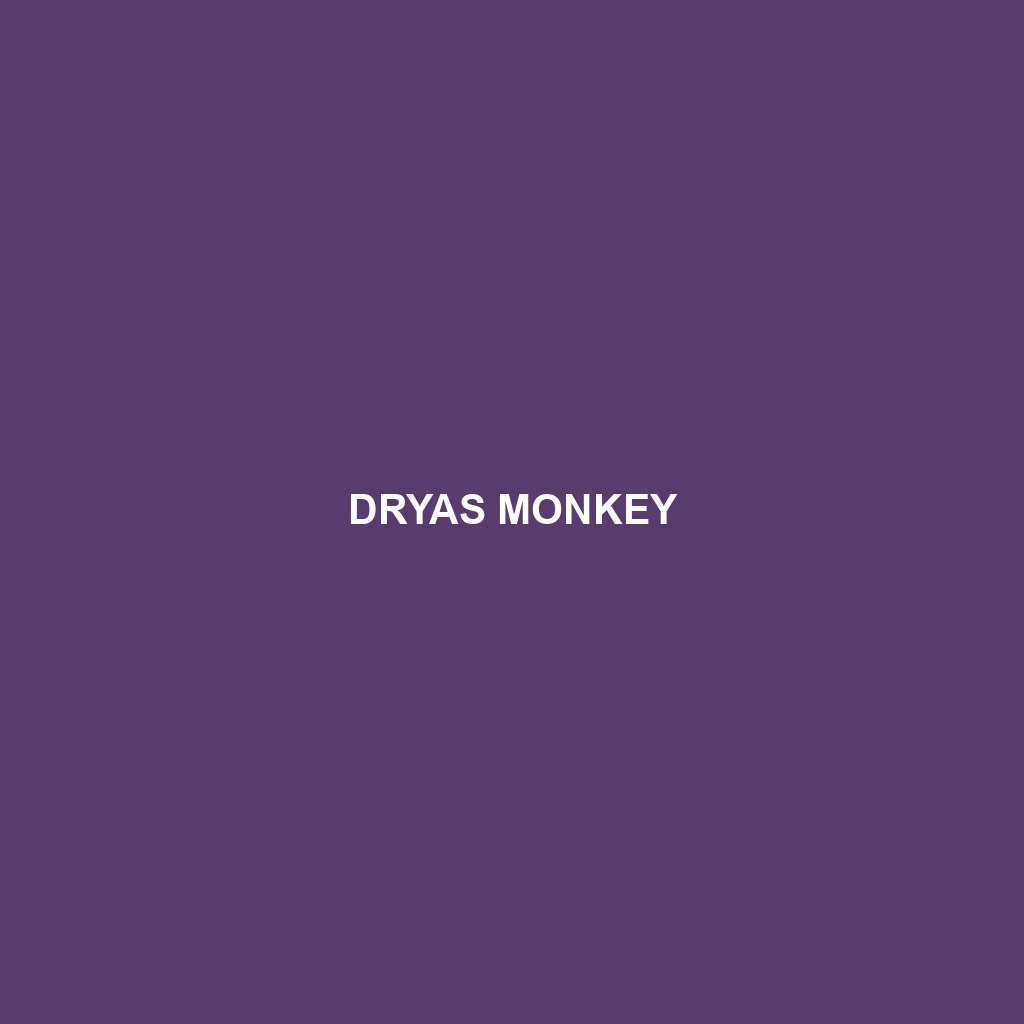Dryas Monkey (Cercopithecus dryas)
The Dryas Monkey, scientifically known as Cercopithecus dryas, is a small and elusive primate species native to the dense rainforests of the Democratic Republic of Congo. Often referred to as Salonga Monkey or Inoko, this species is known for its striking coloration and agile movements. Despite its captivating appearance, the Dryas Monkey remains one of the least studied primates, making it a subject of intrigue and concern among conservationists.
Physical Characteristics
Size: Dryas Monkeys are relatively small in size, with adults ranging from 40 to 55 centimeters in body length. They have a tail that is about as long as their body, which aids in balance and movement through the trees.
Coloration: One of the most distinctive features of the Dryas Monkey is its vibrant coloration. They have a predominantly black coat with a white underbelly. Notably, their face is adorned with a striking mix of colors: a white muzzle, a blue nose, and a reddish-brown patch on the forehead.
Special Features: These monkeys have large, expressive eyes that provide excellent vision in the dim light of the rainforest understory. Their nimble fingers and strong limbs are perfectly adapted for an arboreal lifestyle, allowing them to navigate the dense foliage with ease.
Behaviors
Social Interactions: Dryas Monkeys are typically social animals, living in small groups that can range from a pair to a dozen individuals. These groups are often composed of a dominant male, several females, and their offspring. Social bonds are maintained through grooming and vocal communications.
Feeding Habits: They are primarily frugivorous, meaning their diet mainly consists of fruits. However, they are known to be opportunistic feeders and will also consume leaves, flowers, insects, and small invertebrates to supplement their diet. Their foraging behavior is highly adaptable, allowing them to thrive in their dynamic rainforest environment.
Ecological Roles: As frugivores, Dryas Monkeys play a crucial role in seed dispersal, which helps maintain the health and diversity of their rainforest habitat. By consuming various fruits and excreting the seeds in different locations, they contribute to the growth of new plants and the regeneration of their ecosystem.
Habitat
Dryas Monkeys are endemic to the lowland rainforests of the Democratic Republic of Congo. They prefer dense, primary forests with a closed canopy that provides ample cover and food resources. These monkeys are highly arboreal and spend most of their time in the trees, rarely descending to the forest floor.
Adaptations
Arboreal Lifestyle: Their physical adaptations, such as strong limbs, dexterous hands, and a long tail, are perfectly suited for an arboreal lifestyle. These features enable them to leap between trees and navigate the complex three-dimensional environment of the rainforest.
Camouflage: The unique coloration of the Dryas Monkey not only makes them visually striking but also serves as camouflage within the dappled light of their forest habitat, helping them avoid predators.
Conservation Status
The Dryas Monkey is listed as Endangered on the IUCN Red List of Threatened Species. Their population is under significant threat due to habitat loss from logging, mining, and agricultural expansion. Additionally, they are hunted for bushmeat, which further reduces their numbers. Conservation efforts are critical to protect this rare and beautiful species from further decline.
Fun Facts
Elusive Nature: Due to their shy and elusive nature, Dryas Monkeys are rarely seen, and much about their lifestyle remains a mystery to scientists.
Unique Vocalizations: They communicate using a variety of vocalizations, including whistles, chirps, and grunts, each serving different social functions such as alerting the group to danger or coordinating movements.
First Described in 1932: Despite being first described to science in 1932, very few studies have been conducted on the Dryas Monkey, making every new observation critical for understanding their biology and ecology.
By understanding and appreciating the unique attributes of the Dryas Monkey, we can better advocate for their conservation and ensure that these remarkable creatures continue to thrive in their natural habitat.
